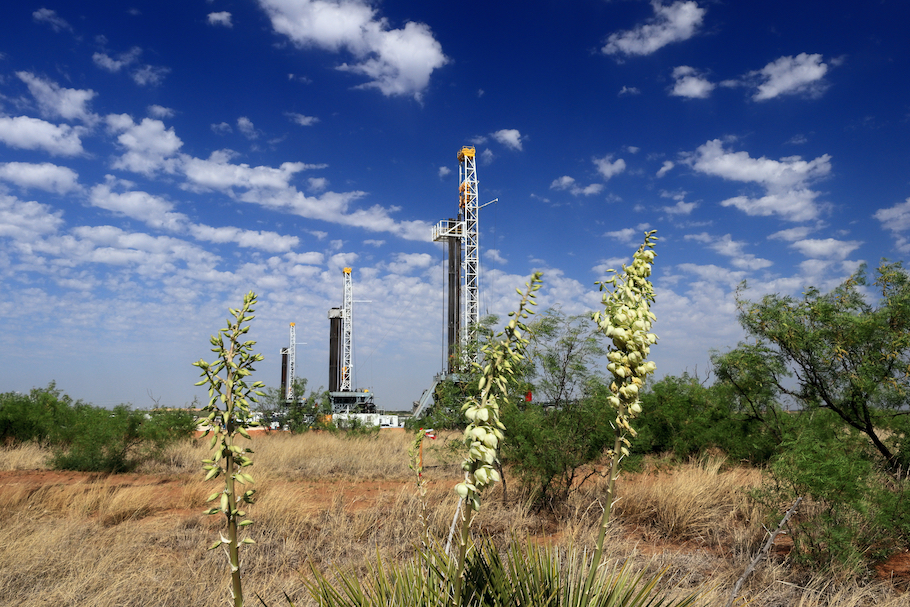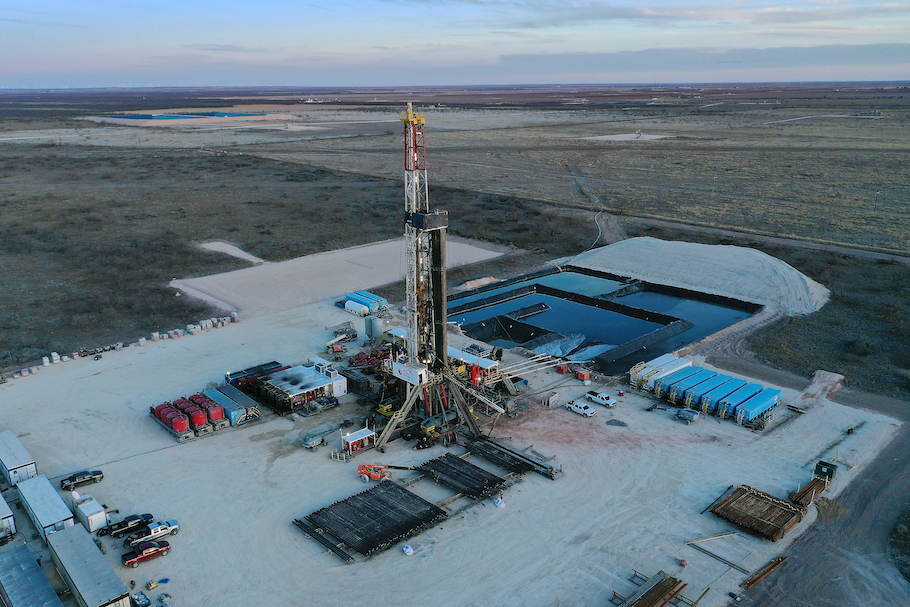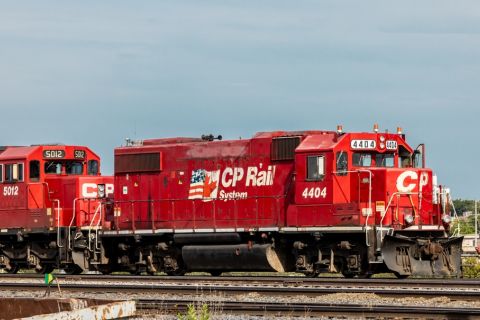Presented by:

Editor's note: This article appears in the new E&P newsletter. Subscribe to the E&P newsletter here.
To coincide with Hart Energy's DUG Permian and Eagle Ford conference—happening now in Fort Worth, Texas—Baker Hughes, NOV and TGS experts share their insights on the latest technology innovations and happenings in the Permian Basin.
Speakers:
- David Reid, CTO & Chief Marketing Officer, NOV
- Carl Neuhaus, Vice President, Well Data Products, TGS
- Steve Goldstein, Unconventional Platform Leader, Turbomachinery & Process Solutions, Baker Hughes
- Chris Alves, Product Manager, Drilling & Evaluation, Oilfield Services, Baker Hughes
- Ruben DeVelasco, Vice President Sales & Commercial, North America Land Oilfield Services, Baker Hughes
- Ben Linke, Vice President of Emissions Management, Baker Hughes

E&P: What's next for the Permian Basin? What tech challenges still need to be addressed and/or improved?
Reid: I think the integration of data and automation across all systems is a strong area of focus. If there ever was a market that knew how to take advantage of technology to lower costs and lift efficiencies, it is the Permian. The systems are all starting to talk to and with each other, and the tools are advancing enough that I think implementation of true system digital solutions are next up.

Goldstein: Many oil-producing shale basins, like the Permian Basin, yield excess natural gas, which is flared due to pipeline infrastructure constraints. Baker Hughes offers a range of high-efficiency, trailer-mounted turbines that can power hydraulic fracturing fleets by converting wasted flared gas into electricity. E-frac solutions provide many benefits to customers. For instance, gas turbines require less maintenance than diesel engines, reducing total cost of ownership. There also are obvious environmental benefits. Across North America, there are around 225 frac fleets. The majority currently are powered by trailer-mounted diesel engines. Each frac fleet can consume up to 7 million gallons of diesel annually. Switching just one frac fleet from diesel to natural gas can therefore significantly reduce emissions. As customers become familiar with these benefits and diesel-run frac fleets age out, we expect the market for e-frac solutions to grow substantially over the next couple of years.
E&P: In your opinion, in the last two years, what has been the greatest improvement to a single upstream tool used in the Permian?
Reid: I really think the introduction of a field-ready eFrac system has been long overdue, and the combination of system efficiency, productivity and cost reduction while reducing footprint and meeting ESG benefits is a big winner.

Alves: I would have to say that our Lucida rotary steerable service (RSS) has the most potential to improve drilling in the Permian Basin. Lucida maximizes directional drilling performance by combining reliable electronics with near-bit sensors that enable drillers to more precisely guide bottomhole assemblies. At its core, Lucida enables customers to drill better quality 'slim hole' 3D curve and extended laterals faster and more cost-effectively. We know that Lucida reduces days of rig time, which translates to significant savings in any drilling program in any application. I don’t think anyone would have anticipated two years ago that 91% of our RSS work in North America land would be drilled with technology deployed remotely. By designing Lucida from the ground up with seamless integration of hardware, software, automation and remote connectivity, we are doing exactly that. With further advances in automation and advanced analytics, this is just the beginning.
E&P: Do you have any R&D projects in the works that apply and/or are being implemented in the Permian Basin?

Neuhaus: One of our focus areas is elastic inversion due to the fact that geomechanics are top of mind for a lot of our customers. Wellbore interference can lead to pretty significant performance degradation. We’re fortunate to have an extensive library of both seismic data and well data as well as in-house machine learning capabilities, so we are using that to derive a relationship between various rock types and elastic properties. The result is a 3D rock property/lithology cube that assists in choosing well locations, infill wells and provides a valid tool to geo-steer the lateral path of the well.
We recently published a paper where we identified lithology/rock types at reservoir intervals by integrating seismic prestack data and well data that have been augmented through machine learning. We compared a more conventional approach, a LambdaRho-MuRho cross plot to break out various lithologies, to a prediction attribute that was derived using machine learning. The neural network derived electrofacies show much more detail within the reservoir rocks, so that’s really promising, and it provides huge value to our customers, especially in areas with sparse well control.
Reid: We have a lot of active new technologies in play that are being launched or currently targeting the Permian. We are looking into reducing the number of necessary people on site as well as improving performance across operations. Automation is a theme in our portfolio, leading with integrated process controls on rigs using our NOVOS reflexive drilling system that integrates automated MPD and other services. Additionally, our collaboration with Schlumberger integrates their DrillOps system with NOVOS to deliver enhanced automation, and we’re providing breakthrough software like our KAIZAN application to optimize drilling energy and efficiency. The same goes for work we have developing automated sequences in coil tubing. The use of automation is part of our strategy for facilitating remote support from experts over multiple applications. We have a project with a major drilling contractor where we have developed software to utilize existing high-volume production industrial robots, taking people out of harm’s way and building new consistencies in operations tied into our NOVOS platform. We continue to advance all of our downhole tools, and we are seeing a breakthrough in our Agitator On-Demand system, which is proving that we can reach into extended laterals with lower pressure drop and higher energy to get more pressure to the bit so you can go even farther than before. We’re really focused on performance when it comes to drill bit solutions in the Permian. We’ve developed next-generation cutters, enhanced materials and new hardfacing technologies, which are delivering impressive results in the areas of durability and ROP for our fixed cutter drill bits. To support these efforts, we opened an R&M hub in San Antonio [Texas] to speed up the repair cycle as well as a dedicated manufacturing hub to provide faster lead times for our steel-bodied product.

E&P: Digitalization and automation are buzzwords in the upstream sector right now—right along with ESG. What is your company's top technology focus in the Permian right now?
Neuhaus: Digitalization is just another word to describe the delivery and integration of data into workflows, so that’s what we’re focused on. Data discovery goes along with that for better utilization of your data assets. We are heavily involved with OSDU [open subsurface data universe] and recently released a set of OSDU-compliant APIs to seamlessly access our entire library of geological data. We also announced a partnership with two other industry leaders in the multiclient geoscience world to offer a platform-agnostic and shared ecosystem providing direct access to our seismic data libraries to customers. The immediate value proposition for that is cycle time reduction so our customers can make decisions faster and cost savings because it takes fewer resources to manage your data.
Reid: NOV is field testing its new Max Edge system and drilling analytics platform in the Permian Basin with two large independents. This system provides state-of-the-art, high-speed data acquisition, data aggregation and visualization, which includes a field-proven drilling analytics package. The system was developed in partnership with one of the operators with which we are currently field testing. When commercial, we believe this system will significantly improve data management and interoperability. The ability to gather data from any device and streamline the code into actionable improvements in operations is going to be a game changer.
When you look at our operations on our test rig, the numbers become very real. I recently observed a well that was tripped and untouched by human hands and a driller using automated MPD. This implies a potential reduction of five to eight people from the operation. We don’t have our customers’ operating numbers, but it does explain the rapid adoption of these technologies in the field. When fewer people are in harm’s way and a smaller crew is needed on site, the reduction in traffic and carbon footprint are reduced dramatically. These technologies are in their early days, but the impact is very real and easily adopted with existing operations.
Our ESG impact on a frac site has also seen excellent progress. We introduced the removal of frac iron with our new FlexConnect HP frac hose solution, taking out risk and making the site easier to manage. The number of high-pressure connections are reduced by up to 90%, with a significant reduction in vibration and wear points while increasing flow capabilities when compared to conventional iron. When combined with our FracMaxx articulated flowline and Big Bore QuickLatch system, human beings can handle operations efficiently and safely in a remote area while connecting up without risk of exposure to hazards.

DeVelasco: Baker Hughes knows that its customers in the Permian are trying to meet tough production targets. Our most recent offering—something we call Production Solutions—calls for a three-pronged approach:
- It starts with our Reservoir Technical Services modeling the reservoir and the fluid characteristics to optimize production for the customer—potentially with fewer wells.
- Once the optimal plan is determined, we then pair our electrical submersible pumps (ESPs) with sophisticated chemistry to prolong the life of the pump by counteracting the effects of corrosion and scale, which are common in the Permian.
- Finally, automation plays a key role in keeping the well flowing. Sensors monitor ESP performance, adjusting both production flow and chemical injections. The ability to monitor ESP operations remotely, along with automatic tank monitoring, means fewer trips to the well site and reduced the associated emissions.
Through our solid understanding of the reservoir, coupled with technology to increase ESP performance and smart chemistry to improve ESP run life, we are able to optimize production. This multi-faceted approach can make a real difference in Permian production performance.

E&P: How is your company implementing carbon management technologies in the Permian Basin and/or what carbon management projects are you involved in within the Permian?
Reid: Once again, we have been very busy. On the rig side, we have introduced our Maestro technology to manage power systems with either a simple alert system or integrated shutdown process, eliminating unused power generation when idling. Another very exciting breakthrough has been the introduction of a hydrogen ingestor for diesel generators, which has been reducing fuel use by more than 30% with a very simple addition to the air intake. This will be further tested in the field on rigs and frac fleets alike, and it fits very well with our new Ideal eFrac system. Our Ideal eFrac system has successfully proven in field tests that it can reduce maintenance cost by 44% versus conventional frac technologies. In field applications, the Ideal eFrac has pumped up to 3.8 times more volume than its dual-fuel counterparts. The Ideal system has been successfully deployed and operated on 100% natural gas power, with field data confirming an ESG advantage. In addition to these advancements, we are in the very early stages of a carbon capture program with an operator in the Permian. Essentially, we are developing a coating to protect steel in the carbon capture process.

Linke: Baker Hughes is partnering with companies in the Permian Basin to change how methane emissions are monitored, measured and reduced. The prolific well count makes the Permian an ideal place for energy technology companies, like Baker Hughes, to identify and develop technology to support customers with best emissions management practices. The focus is shifting from the traditional approach to measuring methane, which involves teams working manually on an ad-hoc basis, often in potentially hazardous conditions, to deploying cutting-edge digital technology developed by our business.
Avitas, a Baker Hughes business, offers a full suite of methane detection, quantification and localization technology solutions. Avitas’ LUMEN platform consists of two seamlessly connected emissions monitoring formats: a ground-based, solar-powered wireless sensor network called LUMEN Terrain and a drone-based system for over-air methane inspection called LUMEN Sky. Both ensure methane emissions are monitored as efficiently and accurately as possible in real time. Baker Hughes has partnered with Shell in the Permian to test LUMEN Sky using AI-enabled drones equipped with methane detection cameras and sensors.
RELATED CONTENT:
July 7, 2021 Oil and Gas Industry Should Confront Flaring, Methane Leaks
July 7, 2021 Liberty Completes digiFrac Electric Frac Pump Field Test in Permian Basin
July 1, 2021 Midland Basin’s Major Mojo
June 30, 2021 Chevron Looking to Sell Permian Assets Valued at More than $1 Billion
June 24, 2021 Breakwater Energy Partners Expands Recycling Center in Permian
June 23, 2021 ‘Simul-frac’ Technique Helps Shale Operator in Permian to Set Record
June 17, 2021 EagleClaw to Power Permian Operations from 100% Renewable Energy
Recommended Reading
Kissler: OPEC+ Likely to Buoy Crude Prices—At Least Somewhat
2024-03-18 - By keeping its voluntary production cuts, OPEC+ is sending a clear signal that oil prices need to be sustainable for both producers and consumers.
Buffett: ‘No Interest’ in Occidental Takeover, Praises 'Hallelujah!' Shale
2024-02-27 - Berkshire Hathaway’s Warren Buffett added that the U.S. electric power situation is “ominous.”
NOV's AI, Edge Offerings Find Traction—Despite Crowded Field
2024-02-02 - NOV’s CEO Clay Williams is bullish on the company’s digital future, highlighting value-driven adoption of tech by customers.
Greenbacker Names New CFO, Adds Heads of Infrastructure, Capital Markets
2024-02-02 - Christopher Smith will serve as Greenbacker’s new CFO, and the power and renewable energy asset manager also added positions to head its infrastructure and capital markets efforts.
After Megamerger, Canadian Pacific Kansas City Rail Ends 2023 on High
2024-02-02 - After the historic merger of two railways in April, revenues reached CA$3.8B for fourth-quarter 2023.





